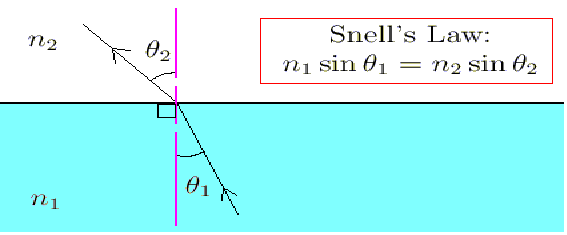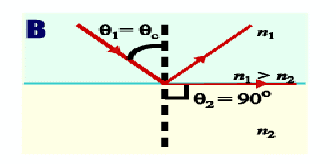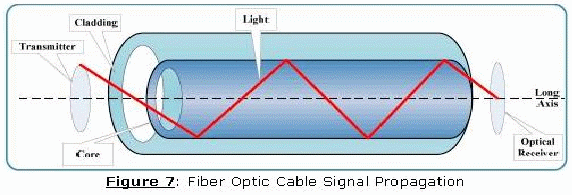When light passes from one material to another the direction of the light usually changes. This is because of a property called the refractive index of a material, labelled by![]()

The light changes direction according to Snell's Law, given above. This is illustrated in the diagram for light passing out of water into air.
The refractive index of air is taken to be 1. If the refractive index of water is 1.33, then if we can measure![]() we can find
we can find![]() by calculation. Suppose we measure
by calculation. Suppose we measure![]() to be 40 o .
to be 40 o .
![]()
![]()
![]() o
o
Total Internal Reflection
From Snell's Law,![]() there is a certain vale of
there is a certain vale of![]() called the critical angle, for which
called the critical angle, for which![]() This value is labelled
This value is labelled![]() and is illustrated below.
and is illustrated below.

For![]() total internal reflection occurs. No light passes through the interface between the two materials.
total internal reflection occurs. No light passes through the interface between the two materials.
For![]() the angle of refraction is 90 o . All the light passes along the interface between the two materials.
the angle of refraction is 90 o . All the light passes along the interface between the two materials.
For![]() the light is refracted as it passes from the first material into the second. This is shown in the first diagram above.
the light is refracted as it passes from the first material into the second. This is shown in the first diagram above.
Fibre Optic Cable

Light strikes the interface between the fibre optic thread and the cladding repeatedly but the angle of incidence is always less than the critcal angle so total internal reflaction repeatedly takes place and the light can pass for long distances along the cable.
